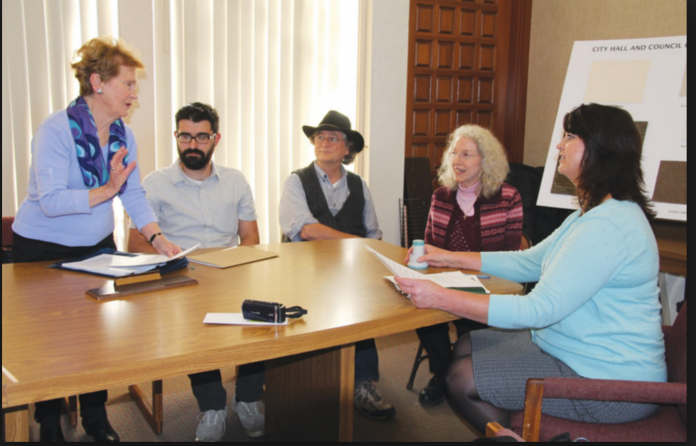Gilroy voters will decide in November whether the city of 55,000 should limit sprawl, after a unanimous vote by the City Council Tuesday night. There will be an item on the ballot asking whether Gilroy residents should vote on future proposed developments and whether the city should keep some of the areas on its borders as open space.
Residents were so angered last December by a proposed 4,000-unit development north of town that they said would bring too much traffic, use too much water and cost too much in services that they formed a group called Gilroy Growing Smarter, which collected enough petition signatures to present an initiative for an urban growth boundary that would require any future large developments outside the city to be approved by the voters.
Certain types of development would still be allowed, including affordable and low-income housing, schools and parks. If passed by voters in November, the growth restrictions would be in place until December 31, 2040.
After voicing complaints about the idea, the council voted unanimously to let the voters have their say. The election will cost the city $47,000. The city already has spent $150,000 on a three-month-long study that showed that cutting housing projects would cut projected jobs and revenue.
The 100-page study, produced by Berkeley’s LSA Associates, said the initiative limiting growth would cut county jobs in 2020 by 31 percent, from a possible 2,652 to 1,842 and drop economic output from $469 million to $326 million. In 2040 it predicts revenue and job drops of 25 percent.
City revenues, it predicts, would drop 5 percent in 2020 and 41 percent in 2040.
Feelings were mixed in what promises to be a continuing controversy—paralleling the presidential election—through November. Proponents of the Urban Growth Boundary Initiative said they would have preferred that the council just adopt their proposal, rather than put it to a vote.
“I was disappointed that some of them were representing what the urban growth boundary actually is,” said David Almeida, a Gilroy Growing Smarter member who serves on the city’s Community and Neighborhood Revitalization Committee. “I’ve been hearing a lot of no-growth rhetoric, which is not necessarily what an urban growth boundary leads to. Portland has a boundary and it’s still growing like crazy. It has to do with how we modify what we have, adding more dense development rather than urban sprawl.”
Councilmember Dion Bracco said he is against limiting growth, but agreed to let the voters decide.
“When a city stops growing, it starts dying,” he said. “If this was to pass you would see housing values skyrocket. It’s simple supply and demand. If there’s no housing available, if it’s not being built, it’s going to cost more.”
Bracco said that residents didn’t need to vote on every housing issue because they are already represented by elected officials. “People say they weren’t listened to. True. You have a mechanism for that. There’s an election every two years. You can change who sits up here.”
Mayor Perry Woodward, who was a proponent of the proposed Los Olivos Ranch housing development last December, said he didn’t think the election was a good idea, but it was part of a necessary community discussion.
Gilroy Growing Smarter secretary David Lima said the group is looking forward to spending the coming months getting the word out about the initiative and clarifying concerns surrounding the land-use issue.
“We aim to let the people of Gilroy know the UGB initiative would be good for Gilroy and why,” he said. “And to convince people to vote in November.”
Lima said the council put on a show of letting the voters decide.
“The fact is there was only one other alternative the council could take, and that would be to adopt the initiative as an ordinance and save the voters $50,000. So like true salesman and lawyers they made it seem like they were doing a good thing,” he said.
Gilroy Growing Smarter members questioned the findings of what was billed as an outside, independent study.
“The two scenarios that they used to compare were complete and full buildout of every piece of property as it is zoned in the 2020 and 2040 general plans,” said Lima. “Complete buildout means that every parcel in the entire area of Gilroy’s control would be developed to the maximum potential of its zoning classification.”
These are scenarios, Lima argued, that are “so unlikely that it’s impossible. If that were to happen it would add so many homes and so many jobs that the city would be completely unrecognizable.
“It would have been nice if the report had been written comparing the Gilroy of today to the Gilroy of 2040 with the UGB in place,” Lima added. “That would have given voters and council members a much different view of how good life would be under the UGB.”















